‘Milgadara’
Putting life back into the soil with humus compost
A REGENERATIVE AGRICULTURE CASE STUDY
 Meet Bill and Rhonda Daly
Meet Bill and Rhonda Daly
Bill and Rhonda Daly are producing sweet smelling and fertile soils after investing in understanding their landscape and producing humus compost to attain profitable biological agriculture.
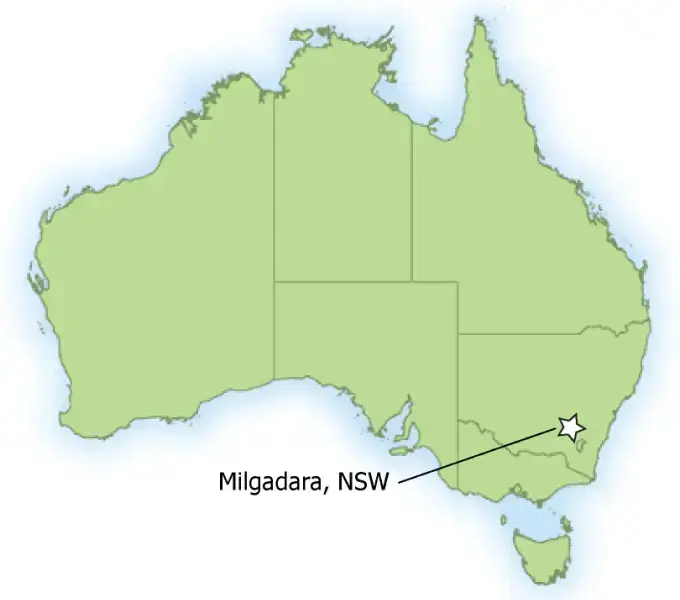
20km east of Young, NSW South West Slopes
FARM FACTS
ENTERPRISE: Crops. Sheep. Compost.
PROPERTY SIZE: 1182 hectares
AVERAGE ANNUAL RAINFALL: 600 mm
ELEVATION: 386m
MOTIVATION FOR CHANGE: Health concerns and disillusion with ‘chemical’ farming
INNOVATIONS
- Development and application of humus compost
- Focus on soil structure, biology and mineral balance
- Legume under-sowing of crops
- Innovations commenced: 2001
KEY RESULTS
- Restored soil health
- Increased wool staple strength and lambing percentages of up to 150%
- Increased crop yields with reduced inputs; pest and disease free
- Established compost business with client base of over 2000
Introduction
Bill and Rhonda Daly transitioned from a farming system that was well known to them but causing a deal of discomfort, to one that is building the natural resource base and delivering great personal rewards. The Dalys rely on an extensive understanding of the potential of the landscape, in particular a profound respect for their soils. In ‘reading’ what is happening on their property, through the health of their animals, pastures, cropping activity, soil, water courses and vegetation, they now find they can be proactive in their management and anticipate what needs to be tackled to achieve their aims. This is a big step from their approach to farming prior to 2001 when they acknowledge that they were essentially reacting to weed and pest problems, increasing inputs with limited productivity gain and sensing that they were doing more harm than good to their environment.
Bill and Rhonda have invested in educating themselves in grazing management, minimum till cropping and, in particular, the role of humus compost in promoting beneficial soil life. Production increases were experienced within six to nine months of adopting changes on their property. The Dalys have now included a commercial composting operation on their farm and have helped others establish their own composting operations in over 42 regions across Australia and New Zealand. In addition to providing diversity in their income stream, the results from using humus compost on their farm are clearly positive and for all to see.
About Milgadara
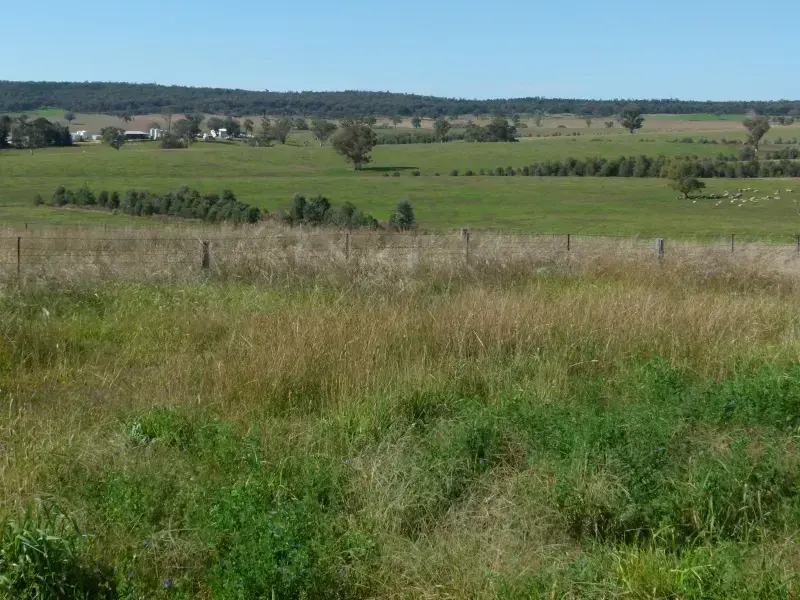 The Dalys are the fourth generation on Milgadara, which is located about 20 minutes outside of Young, NSW. The 1182 hectare property has a south westerly aspect and the landscape consists of soft rolling hills. Their north eastern boundary is bordered by the Douglas Range which forms 200 hectares of the property.
The Dalys are the fourth generation on Milgadara, which is located about 20 minutes outside of Young, NSW. The 1182 hectare property has a south westerly aspect and the landscape consists of soft rolling hills. Their north eastern boundary is bordered by the Douglas Range which forms 200 hectares of the property.
The open country is lightly timbered with trees consisting of stringy bark (Eucalyptus macroryncha), white box (Eucalyptus albens), yellow box (Eucalyptus melliodora), red gum (Eucalyptus blakelyi) and rough-barked apple (Angophora floribunda). Thirty hectares have been reforested to form shelter belts for stock and increase biodiversity for protection of native fauna.
Prior to cultivation the landscape had outcrops of eucalyptus with native grasses such as red grass (Bothriochloa macra) and wallaby grass (Austrodanthonia spp.). Pastures comprised annual rye grass (Lolium multiflorum), sub clover (Trifolium subterraneum), some phalaris and cape weed (Arctotheca calendula), and species diversity was low. There was relatively low weed pressure, only a few thistles, marshmallow (Malva parviflora) and cape weed. Army worm, red legged earth mite and other pests and weeds were sprayed with chemicals for control.
The property relies on natural rainfall and dams for water supply. There are natural underground water streams, accessed by windmills and bores.
Previous Production Practices
Fertility was just geared to growing a crop, not sustainably managing the soil to improve overall fertility for future generations.
Prior to 2001 Bill and Rhonda ran a mixed farming enterprise of a self-replacing merino flock, prime lamb production and backgrounding of steers. They used set stocking and their regime included autumn lambing and early spring shearing.
Crops were managed as a rotation of oats, wheat, lupins, wheat, and canola, using four passes of cultivation and sowing with a tyned instrument. Fertiliser programs were based on using 100kg of mono-ammonium phosphate (MAP), 100kg of anhydrous ammonia gas and urea a hectare and stubble burning. Rhonda describes that production practices were reliant on “an overuse of chemicals”.
“This business model led to the mining of our natural resources, destruction of soil structure – greatly diminishing the capacity of the soil to support soil life – as well as making roots unable to penetrate and deliver nutrients to the plant. Minerals were imbalanced and there was low enumeration of microbes”, remarks Rhonda. “Fertility was just geared to growing a crop, not sustainably managing the soil to improve overall fertility for future generations.”
She continues, “Lack of diversity did not allow for natural cycles. An increase in applied fertilisers led to a ‘watery’ plant, increasing both pest and disease issues. There were declining fertility parameters, particularly soil humus and ever-increasing soluble minerals inputs. Ever-increasing amounts of chemicals were being used to control weeds, disease and pests. Nutrient lock-up, leaching and evaporation of nutrients were all occurring”.
In time, the Dalys reliance on inputs of fertiliser, particularly nitrogen and phosphorus, resulted in increasing problems of more weeds, diseases and pests and correspondingly, low yields and profitability. There was a total dependence on feeding the crop and pasture rather than recycling nutrients and fixing atmospheric nitrogen.
Bill and Rhonda suffered increased personal stress due to the higher impact from drought, lower yields and animal health problems. They both note that it was “a downward spiral”.
Making the change
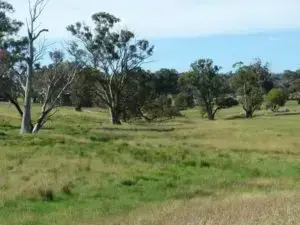
Healthy waterways are now a feature on Milgadara.
The Dalys initially began questioning the direction of conventional farming in the mid 1990s. In searching for alternative approaches, Bill attended a bio-dynamic course in 1995. However, bio-dynamics was considered very ‘new thinking’ and it was not until 2001 when Rhonda was diagnosed with chronic meningitis and heavy metal poisoning that their questioning of what they were doing came to a head. The Dalys say that it was, “A guided message ‘to heal the soil and help others’” that was the catalyst for change.
A combination of thoughts contributed to their desire to change their practices. These included concern about how much farm waste was being burnt rather than being utilised to produce fertiliser for use back onto local soils; disillusion with chemical farming and ever increasing fear surrounding its use; and a sense that they were being sold more ‘bandaids’ to fix things that did not work, rather than address the underlying cause of the problem.
Rhonda says, “We needed to get the eco back into agriculture, not agribusiness. Fundamentally we were greatly concerned about the future sustainability of our farm and children and wanted to adopt a more ‘holistic’ approach”.
Their overall approach was founded on achieving success on three levels – environmental, financial and social – and they now strive to achieve this balance across everything they do.
Restoring the Soils
The soils on Milgadara are granodiorite soils, with sandy loam and a cation-exchange capacity (CEC) varying from three to seven. Soil organic matter had previously been measured at 1.5 to 2.5%.
Due to over-tillage and other conventional farming practices, soil humus levels had declined to a point where soils had become compacted and lifeless. A hardpan had been created at a depth of around 20cm. Low ground cover and the tight compacted soils created runoff and low water infiltration. Contour banks were built to stop excessive runoff and erosion. Practices such as stubble burning and the use of nitrogen gas resulted in no visible signs of earthworms and soils did not smell sweet, meaning low microbial activity in the soil.
In March 2001, 14 soil tests of cropping paddocks were undertaken and independently analysed. The results indicated that the soil nutrients were imbalanced.
SOIL NUTRIENT BALANCE 2001
| Low | High |
|---|---|
| Calcium | Potassium |
| Magnesium | Iron |
| Phosphorus | Aluminium |
| Zinc | Hydrogen |
| Copper | |
| Boron | |
| Sulfur |
The Dalys undertook extensive education to understand how to balance soils, creating greater soil pore space for oxygen and water, enabling the chemical and biological aspects to function to their potential. This also provided an understanding of the function of trace minerals in enzyme production and animal health. Their expertise in ‘reading’ soil health had begun.
Further study was undertaken in the United States in the Advanced Composting System (Humus Technology®) to produce humus compost and extracted compost tea from local waste.
This set the new direction in overall farm management.
Cropping management was overhauled to change to ‘thoughtful tillage’ or No-Till, stubble retention, reduction and buffering of soluble ‘down the tube’ fertilisers, introduction of Microbial Liquid Injection system and introduction of biological fertilisers and inoculums.
The Dalys moved away from monoculture crops on the 350 cropped hectares of the property, and instead began under-sowing legumes such as clover under crops to supply nitrogen. A focused effort was made to reduce chemical use. Instead, they considered what had led to the problem and what might provide alternatives to using chemicals.
Soil Natural Balance
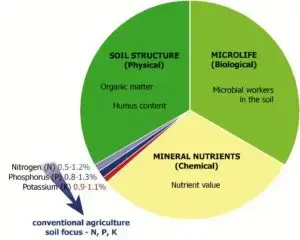 The key innovation implemented intended to restore humus back into the soils and restore the natural biological balance to soils. Rather than what seemed to be a total focus on the chemical dimension of soil fertility, they set about developing humus compost to build productive soils by impacting all three aspects: chemical, physical, and microbiological.
The key innovation implemented intended to restore humus back into the soils and restore the natural biological balance to soils. Rather than what seemed to be a total focus on the chemical dimension of soil fertility, they set about developing humus compost to build productive soils by impacting all three aspects: chemical, physical, and microbiological.
The Dalys follow a specific process in making their compost. Compost materials are combined to ensure a carbon to nitrogen ratio of 25-30:1. This ratio enables the correct temperature and carbon dioxide cycle, ensuring pasteurisation of any e-coli, salmonella and weed seeds. Feedstocks are tested for heavy metals prior to use and excluded if measurements are too high.
Application rates of humus compost for broadacre farming are around 500kg a hectare. The improvement in soil structure and plant health does not come from the quantity of compost applied, instead, it is a catalyst that supports natural system functioning. The humus compost application rate for vineyards, fruit production or vegetable production is greater, at two tonnes a hectare as these crops have higher requirements.
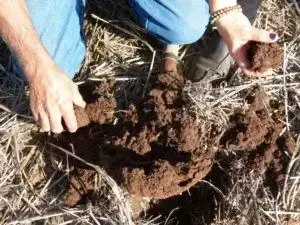
Soil on Milgadara has a vastly improved structure, mineral and biological balance.
Rhonda points out, “Humus improves soil structure by aggregating soil particles and stimulating soil microbes to do the same. Improved structure allows air and water to enter the soil, and allows roots to access more water and nutrients”.
“Humus buffers the reactions of minerals and nutrients in the soil, preventing losses through tie up, leaching and volatilisation. Minerals are made available to the plant and microbes in the right quantities, leading to healthy balanced plants and efficient use of inputs. Humus also reduces the effects of salts and toxic chemicals in the soil.”
Rhonda describes the humus compost as being packed with a diverse range of soil microbes, along with their food source and their home. The Dalys have experienced that, with a little encouragement, the soil microbes perform a wide range of functions that will improve crops and pasture health – nutrient availability, nitrogen fixation and disease suppression.
The success of their compost regimes on Milgadara enthused the Bill and Rhonda to establish a commercial composting operation, YLAD Living Soils. Involving up to two full time compost makers, the Dalys now have a client base of over 2000 people.
Pine Hill Trials
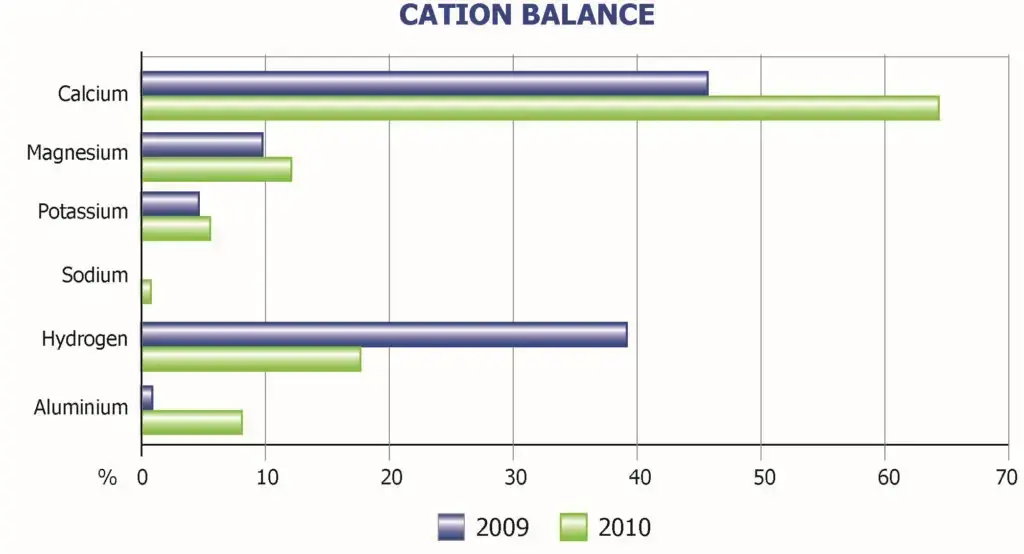
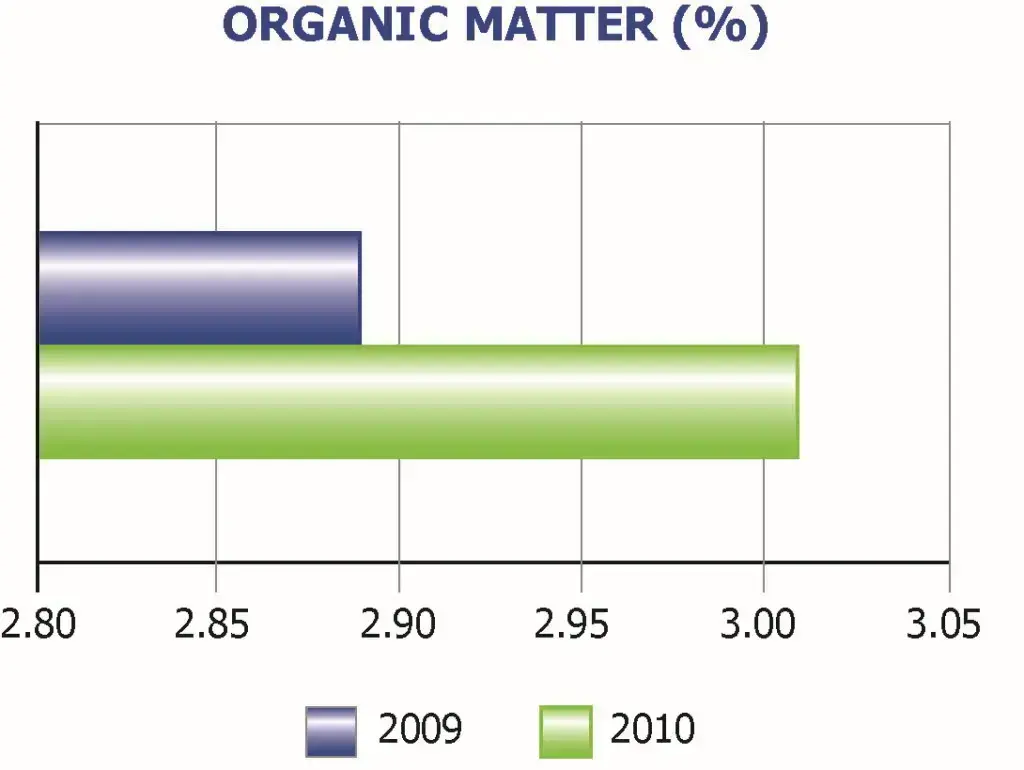
Pine Hill is a paddock on Milgadara that runs off the Black Range with a westerly aspect. The light sandy low CEC soil (CEC 4.03) prior to the trial was compacted, lifeless with low fertility. Pastures were vey sparse and of low nutrient value to animals.
Within two years of spreading YLAD Compost Mineral Blend, using the YLAD Down the Tube granular fertiliser blend at 94kg/ha and biological liquid injection and full stubble retention, the soils have now become soft and well structured with no hardpan, and with visible earthworm and fungal activity. Independent soil tests indicate that mineral balance has improved. The sown pastures are thriving and full of nutrition.
Soil Outcomes
Since 2002 Milgadara has seen a significant improvement in soil structure to a tilthy, well aggregated soil with higher humus levels. Rainfall that is received penetrates further into the soil profile and is retained in the soil for longer. Any excess now flows through the profile without taking nutrients with it. This provides a strong example of how water can be best conserved and used by plants and animals where it falls, reducing the amount lost to run off or evaporation. Increased infiltration and retention is also important, as average rainfall in recent years has varied from as little as 187mm in 2006, to 680mm in 2011.
Rhonda says, “By balancing soils with humus compost mineral blends we have been able to achieve the ideal mineral balance, creating aggregated living soils. As humus has the greatest magnetic attraction to minerals known to man, when minerals are blended with humus compost, nutrients do not leach or lock up but stay available for plant uptake”.
“The addition of trace minerals is essential for enzymatic reactions in the soil. Overall mineral balances have nearly reached ideal balance. Earthworm activity has increased and visible signs of soil fungi present. Soils are now sweet smelling and stubble residues are breaking down rapidly. Organic matter levels have increased to two to four per cent.”
“The cation-exchange capacity of the soil has increased creating a greater store of nutrients.”

Left: Crop stubble is now retained to be broken down on the soil. Right: Soil fungi at work
Production Outcomes
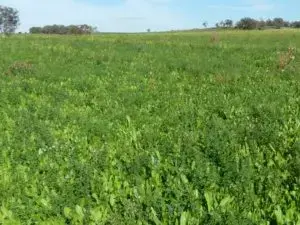
Pasture diversity in the sown pastures.
Complementary to their education on soil and humus compost, Bill and Rhonda attended the Resource Consulting Services (RCS) course on stock management and grazing practice. Now, in addition to the overhaul of the cropping management, closer monitoring of pasture is now performed to determine stock movements. The Dalys run a self-replacing merino flock on Grogansworth bloodlines and undertake prime lamb production using crossbred ewes and merino ewes with Dorset Sire. Lambing has now been changed to early spring with shearing in late winter. Bill and Rhonda also background weaner cattle from time to time.
The carrying capacity of the farm has increased. Lambing percentages are up to 150% in cross bred ewes and 120% in Merino ewes. Staple strength of wool has improved with nothing measuring under 36 Newtons per kilotex (N/tex). Wool buyers are now sourcing the Daly wool due to its increased quality.
Bill points out, “We now have more diverse pasture species, including bi-annual and perennial. Species include cocksfoot, fescues, perennial rye, lucerne, clover, plantain, and chicory. With rotational grazing management pastures are now becoming stronger and more diverse with less weeds”.
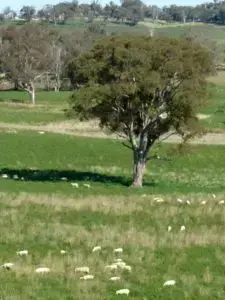
Lambing rates and wool quality have both improved.
With the reduced use of pesticides, fungicides and herbicides, an increase in the biodiversity of beneficial insect populations as well as native fauna has been observed. Mulching of weeds prior to seed set has reduced weed pressure. Soil structure improvements have changed the environment making the conditions not conducive to certain weeds, particularly tap rooted weeds. There is now minimal spraying for weeds, only to manage annual rye grass in cropping, and no spraying for pests.
The Dalys cite some of their other production highlights as:
- Producing crops with less soluble fertilisers with higher yields and higher quality.
- Crop yields have increased with no spring application of urea, however protein levels are higher than under the previous conventional approaches of the 1990s.
- Canola yields up to 3t/ha and 47% oil using only 14 units of N as well as biological nitrogen fixing products.
- Wheat crops now yielding 5-6 t/ha with less fertilisers.
- Independent trials have shown an increase in biomass, tiller count, yield and protein using microbial liquid injection at sowing.
- No signs of disease in any crops, no striped rust, black leg, rhizoctonia or sclerotinia.
- No pests or insects that are causing damage or reducing production.
The Value of Humus
We succeeded through courage, passion, trial and error and never giving up.
The Dalys experience has demonstrated the ability of humus compost to restore and expand biological activity in the soil, further enhancing the physical and chemical properties while reducing soluble fertilisers and chemical inputs. They believe that improving their soils has been their major achievement.
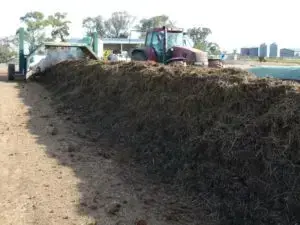
The commercial compost operation.
In 2011, the overall profits of the business had increased over 30% in the previous twelve months. Bill notes, “With nine years of drought from 2001 to 2010 the business profits were still increasing each year. More enjoyment is now gained from farming”.
The opportunity to help others in understanding how their farming enterprise can be enhanced and how to bring soils to life provides a sense of fulfilment for the Dalys. The social importance and community benefits that come from the ability to produce more nutrient dense food with less soluble fertilisers and chemicals is also a satisfying outcome.
“If necessary we could totally produce all required fertiliser inputs on our farm, for our farm, by turning local waste into humus compost. Knowing we can be self reliant is very satisfying”, Bill says.
A lot has been invested into the management changes at Milgadara, and learning the technology to produce humus compost and humus soil fertility has required concerted effort. Education has continued over the past ten years and would amount to over $100,000 including over 15 trips to the United States for study, and courses including RCS, Soil Foodweb and Nutri-Tech Solutions.
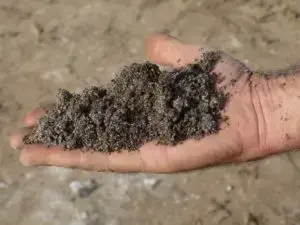
Humus Compost – the finished product.
“By increasing our knowledge we have been able to pass on ‘know how’ to other farmers at much less cost to them”, Rhonda notes. Bill and Rhonda introduced Humus Technology® into Australia in 2006 and have now set up 42 composting operations throughout Australia.
On farm, Bill and Rhonda have also invested around $150,000 in purchasing an Aeromaster PT-170 Compost Turner and Water System to establish their commercial composting operation.
One of the biggest challenges to Bill and Rhonda has been having the courage to stay true to their beliefs regardless of others’ opinions. “We succeeded through courage, passion, trial and error and never giving up.”
Performing trial work to evaluate the benefits of the system and innovation was important. “Ideally we would have started earlier and not bothered about buying more land to expand, just improving what we currently own to increase productivity”, Rhonda notes.
The Dalys would encourage others to consider the benefits of nurturing soil microbiology for increased production. They strongly acknowledge the benefits they have attained through creating their own fertility product from local waste residues to support local food production naturally.
“We could not be happier with the improvements and successes we have introduced. Of course changed management practices have enabled all systems to work together”, Rhonda says.
“By allowing plants to grow and reach their full potential without forcing them has shown profound benefits that can be adopted by all farmers around Australia in any enterprise.”




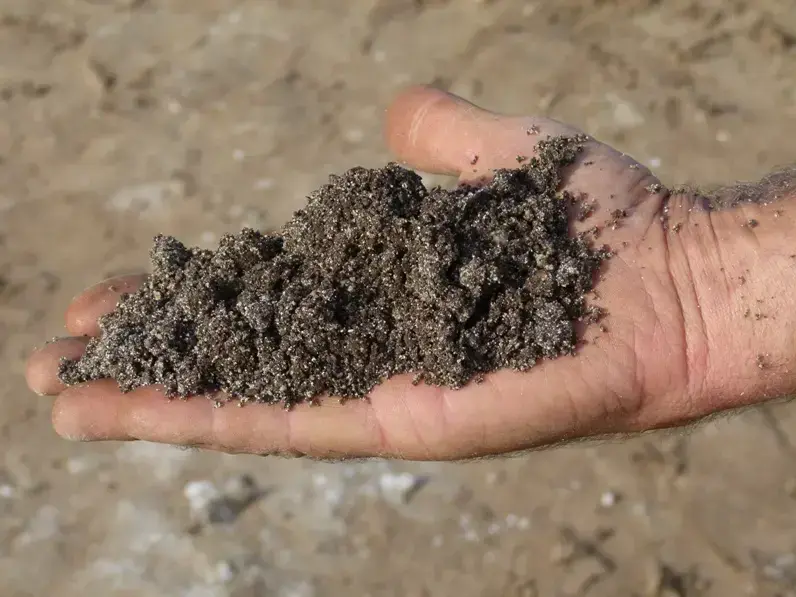
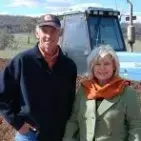 Meet Bill and Rhonda Daly
Meet Bill and Rhonda Daly
